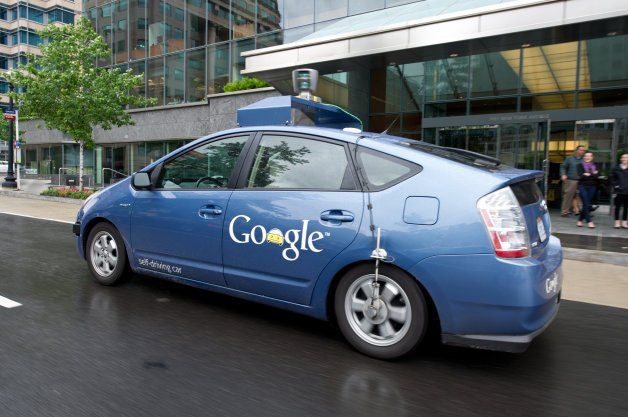Self-Driving Car Demand Seen Boosted by Aging Population

As baby boomers age in markets including the U.S. and Japan, rising numbers of older drivers being killed or injured in accidents may spur demand for autonomous vehicles. With as many as 90 percent of traffic accidents caused by human error, a key benefit of the technology is boosting safety, executives from automakers including General Motors Co. and Toyota Motor Corp. said at an industry conference in Tokyo last week.
"Seniors are often regarded as the victims of traffic accidents," Moritaka Yoshida, managing officer and chief safety technology officer at Toyota, said this month as the company announced plans for automated-driving systems. "However, recently an increasing number of accidents are caused by senior drivers."
Japan, the world’s fastest-aging major economy and the third-largest car market, is at the forefront of the accident trend: of the 4,411 people who died on the road in the country last year, more than half, or 2,264, were 65 or older, according to data from the National Police Agency.
"Driver-assistance and autonomous-driving technologies will definitely help stimulate demand among the elderly by assuring them driving can be very safe," Zhou Lei, a senior manager and auto-industry consultant at Deloitte Tohmatsu Consulting Co. in Tokyo, said in a phone interview. "What’s happening in Japan will also occur in the U.S. and especially emerging countries like China, and the demand will be huge."
'Tipping point'
Carmakers are gradually introducing automated-driving systems that may ultimately lead to self-driving vehicles.
Google has been testing driverless cars in the U.S.
Toyota, the world’s largest carmaker, said Oct. 10 it will introduce systems in about two years that will enable cars to communicate with each other to avoid collisions. GM is planning vehicles by 2020 that will be able to drive themselves on controlled-access highways.
Nissan, Japan’s second-largest automaker, said last month it had obtained a permit to test autonomous cars on public roads in Japan. The company plans to introduce a self- driving vehicle by 2020.
"Autonomous driving could be very helpful to people who have physical challenges, or the elderly," Mitsuhiko Yamashita, executive vice president of Nissan, said at last week’s World Congress on Intelligent Transport Systems in Tokyo.
More fragile
The rising proportion of accidents involving the elderly may have more to do with aging demographics than driving ability. People aged 65 or older accounted for 16 percent of licensed drivers and 17 percent of the 32,367 traffic deaths in the U.S. in 2011, the National Highway Traffic Safety Administration said in April. Total traffic deaths, including those among the elderly, fell 25 percent from 43,005 in 2002.
Once involved in an accident, older people are also at greater risk of dying because their bodies are more fragile. Per mile traveled, fatal crash rates increase starting at age 75 and rise notably after age 80, the main cause being greater susceptibility to injury and medical complications, according to the U.S. Centers for Disease Control.
The higher percentage of traffic deaths involving elderly in Japan -- 51 percent, versus 17 percent in the U.S. -- is mainly due to Japan’s older population, Kazunobu Nagaoka, a researcher at the Tokyo-based Institute for Traffic Accident Research and Data Analysis, said in a phone interview.
Restoring 'Freedom'
With life expectancy rising and births declining, the proportion of Japanese aged 65 or older will swell to 40 percent by 2060 from 24 percent last year, according to government projections.
In the U.S., the number of people aged 65 or older will rise to 20 percent in 2050 from 13 percent in 2010, driven by baby boomers, according to the U.S. Census Bureau. Their total numbers will more than double to 88.5 million from 40.2 million.
Google’s self-driving technology will help the elderly maintain their freedom of mobility, said Anthony Levandowski, one of the leaders of the company’s autonomous-car project.
“This technology restores the freedom that people can’t see,” Levandowski said Oct. 2 via videoconference at the Ceatec technology conference in Chiba, east of Tokyo. “This system will drive old people to see their grandkids and see doctors.”
Catering to older drivers is becoming more important to carmakers not only as the population of elderly grows, but also as younger people buy fewer vehicles.
Youth driver apathy
Toyota President Akio Toyoda recently complained that young Japanese aren’t interested in cars. Japanese in their 20s accounted for only 13 percent of all driving-license holders last year, compared with 26 percent three decades earlier, police data show. That’s a steeper decline than the age group’s share of the population.
“The younger generation are not very interested in driving,” Peter Sweatman, director of the University of Michigan Transportation Research Institute, said in an interview at the ITS World Congress. “It’s kind of a tipping point” for the auto industry, he said.
None of the automaker executives at the conference would predict when they may bring fully self-driving vehicles to the market. It may take longer than people imagine, “but each step along the way will bring amazing benefits to customers,” said John Capp, director of active safety at GM.
Klaus Kompass, vice president of safety at BMW, said full automation won’t happen before 2025. He also cautioned against unrealistically high expectations for safety improvements.
“We are always talking about, ‘80 percent or 90 percent of accidents are caused by human error,’” Kompass said. “Nobody is talking, surprisingly, about all the accidents that human drivers have avoided.”
Nagaoka at the Institute for Traffic Accident Research said that although eliminating accidents completely may be impossible, traffic deaths may become a thing of the past.
“Zero fatalities is definitely a feasible target” in Japan, he said. “I would expect we can realize that around 2035.”
Related News


